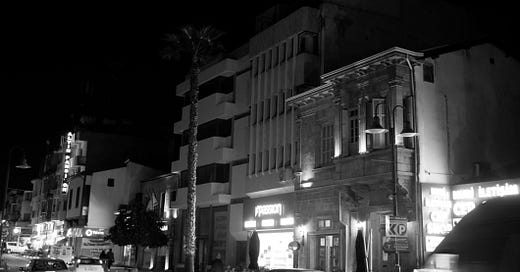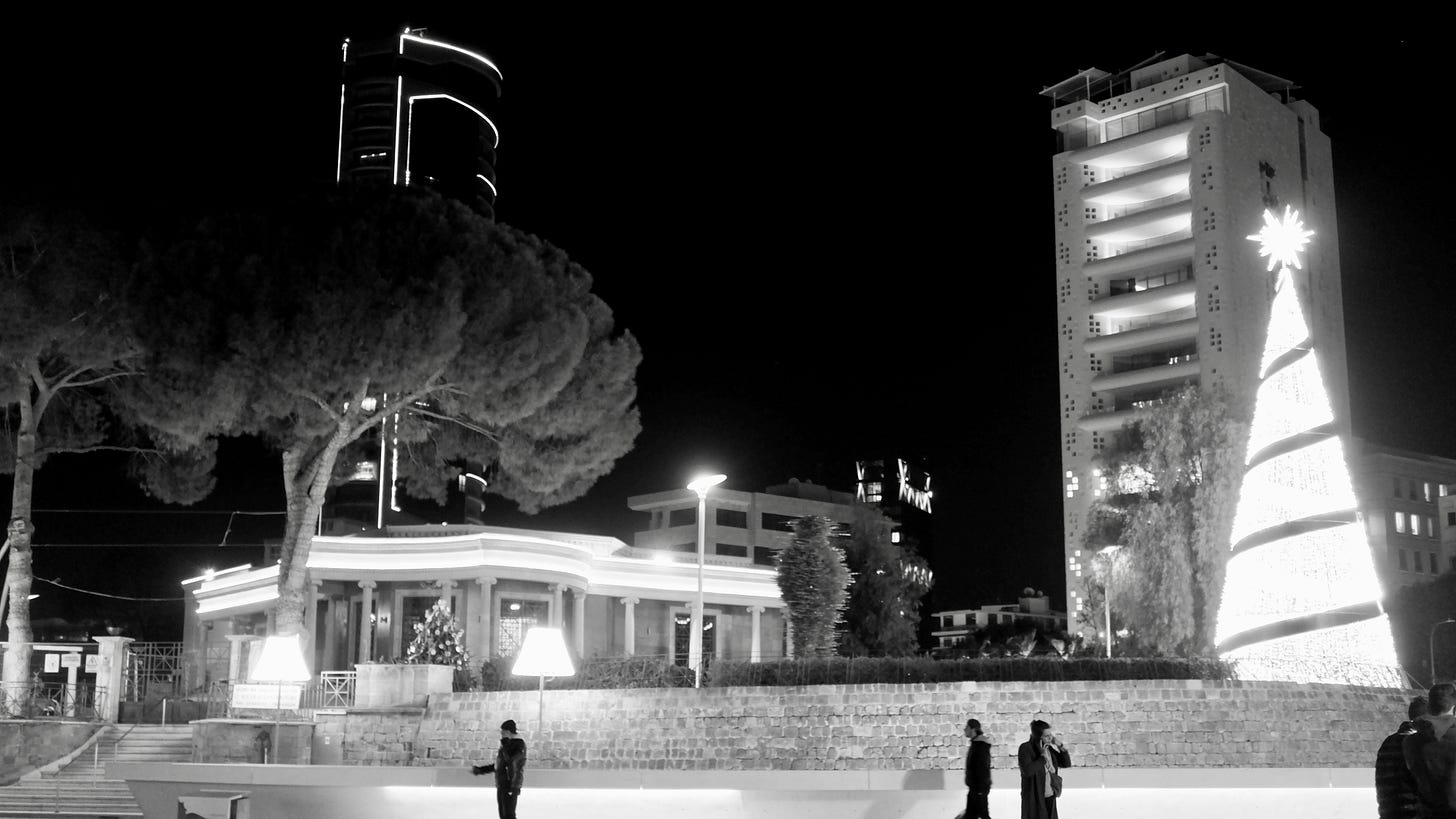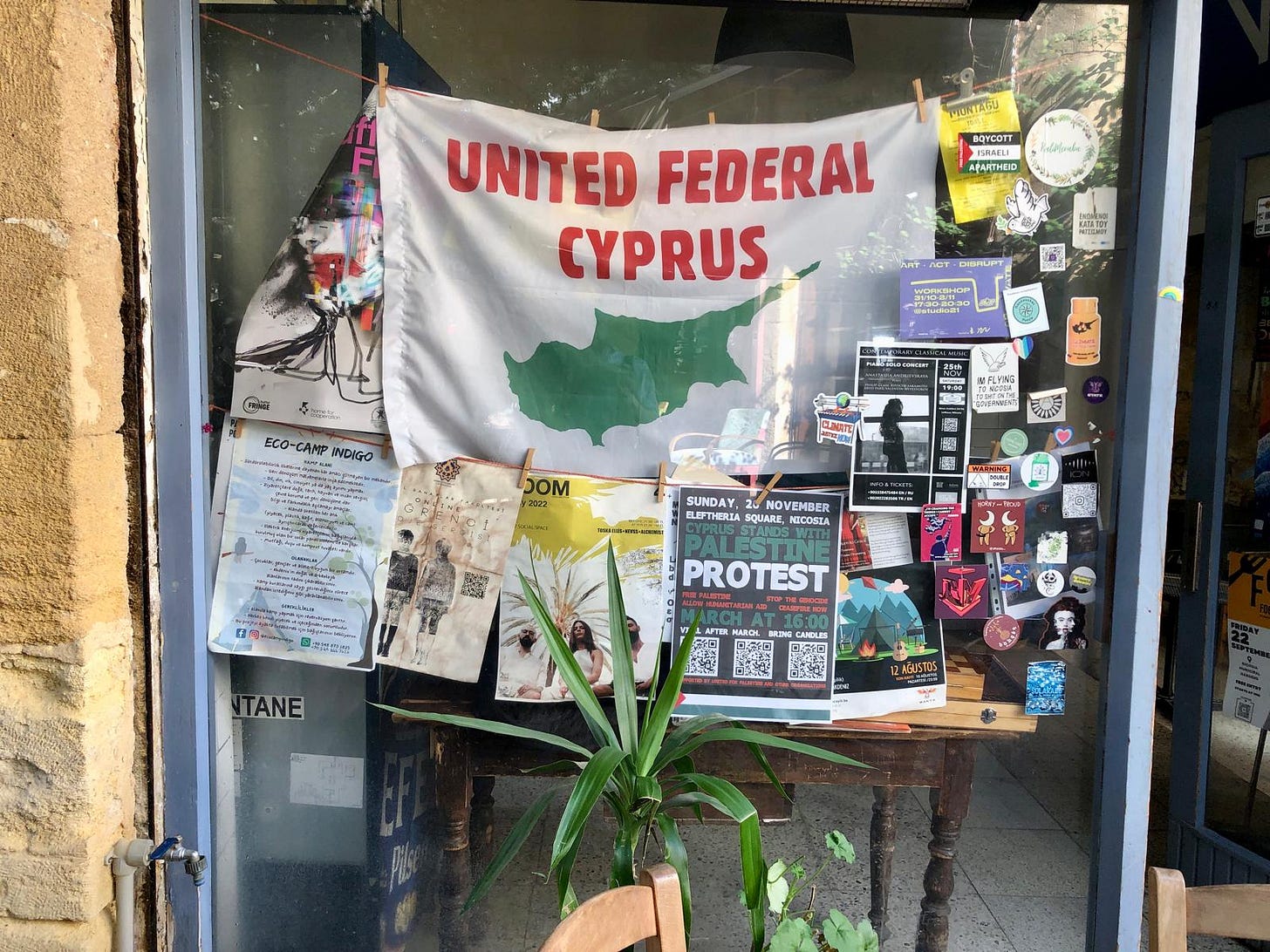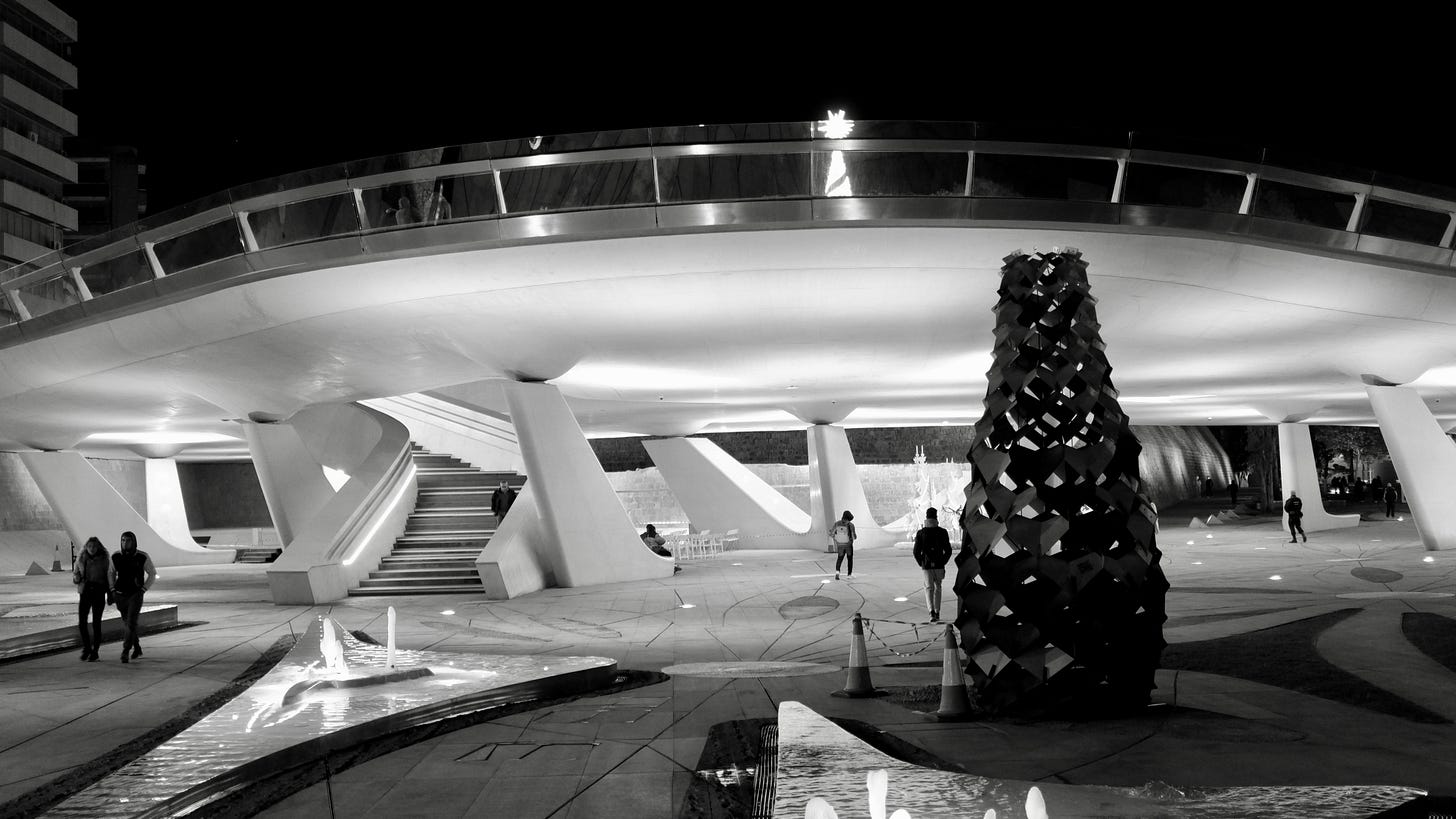A Severed City: The Forlorn Divide of Lefkoşa and Nicosia
Two different worlds exist on either side of the capital of Cyprus, where the border between the Turkish north and the Greek south splits the historic old city.
The first time I visited the island of Cyprus was in the winter of 2008. The plan was to hit Limassol, the sleepy second city of the internationally-recognized Republic of Cyprus on the southern tip of the island. To get there, we flew to the Ercan Airport on the outskirts of Lefkoşa, the capital of the non-recognized Turkish Republic of Northern Cyprus. Approaching the city center, we came upon the bullet-kissed border wall separating Lefkoşa from Nicosia, the capital of the south. This used to be one city, and the wall cuts right through its historic center. I don’t remember much of Lefkoşa (what sticks out was a huge sign in English that said “Turkish Republic of Northern Cyprus FOREVER) as we quickly crossed through the border into the south.
Fifteen years later in late fall of last year, I ended up staying in Lefkoşa for a few days, and was able to explore the Turkish side of the city and once again cross by foot over to Nicosia. Before I go any further, some readers may be asking why this large Mediterranean island is divided. The answer is complicated and the Cyprus issue today remains among the key unsolved conflicts in the region. I am no expert on this, but I’ve tried to sum up the affair as succinctly as possible in the following paragraph.
Cyprus was ruled by the Ottoman Empire for centuries, before being seized by the United Kingdom around the beginning of World War 1. After decades of imperial rule, in 1960 the British handed over power to an ethnic-based power sharing system—not unlike the infamously fragile and weak governments of Lebanon and Bosnia— where the presidency was held by a Greek Cypriot and the vice presidency by a Turkish Cypriot. At the time, the Greek population of the island stood at 77% while the Turkish population was 18%. Needless to say, newly independent Cyprus was marred by ethnic conflict that often spilled into violence, and in 1974, a Greek junta stormed in to take Cyprus and unite it with Greece, prompting a Turkish invasion and all out war before a ceasefire split the island between the Turkish north and the Greek south. The dividing lines sliced through the capital, and remain to this day.
The Republic of Northern Cyprus is not recognized as such by any country with the exception of Turkey, while the entire island is de facto an EU member state. The population in the north consists of equal numbers of Turkish Cypriots and settlers from Turkey. The former are allowed to enter the south with their ID cards, whereas the latter are not unless they have a Schengen visa. This means that the Cypriot-born child of a settler can freely cross, but not with their parents. For foreign nationals like myself, weaving between the two sides is probably the easiest border hop in the world. One evening, it took less than five minutes to get through the passport controls on the Turkish and Greek sides and stroll over into Nicosia.
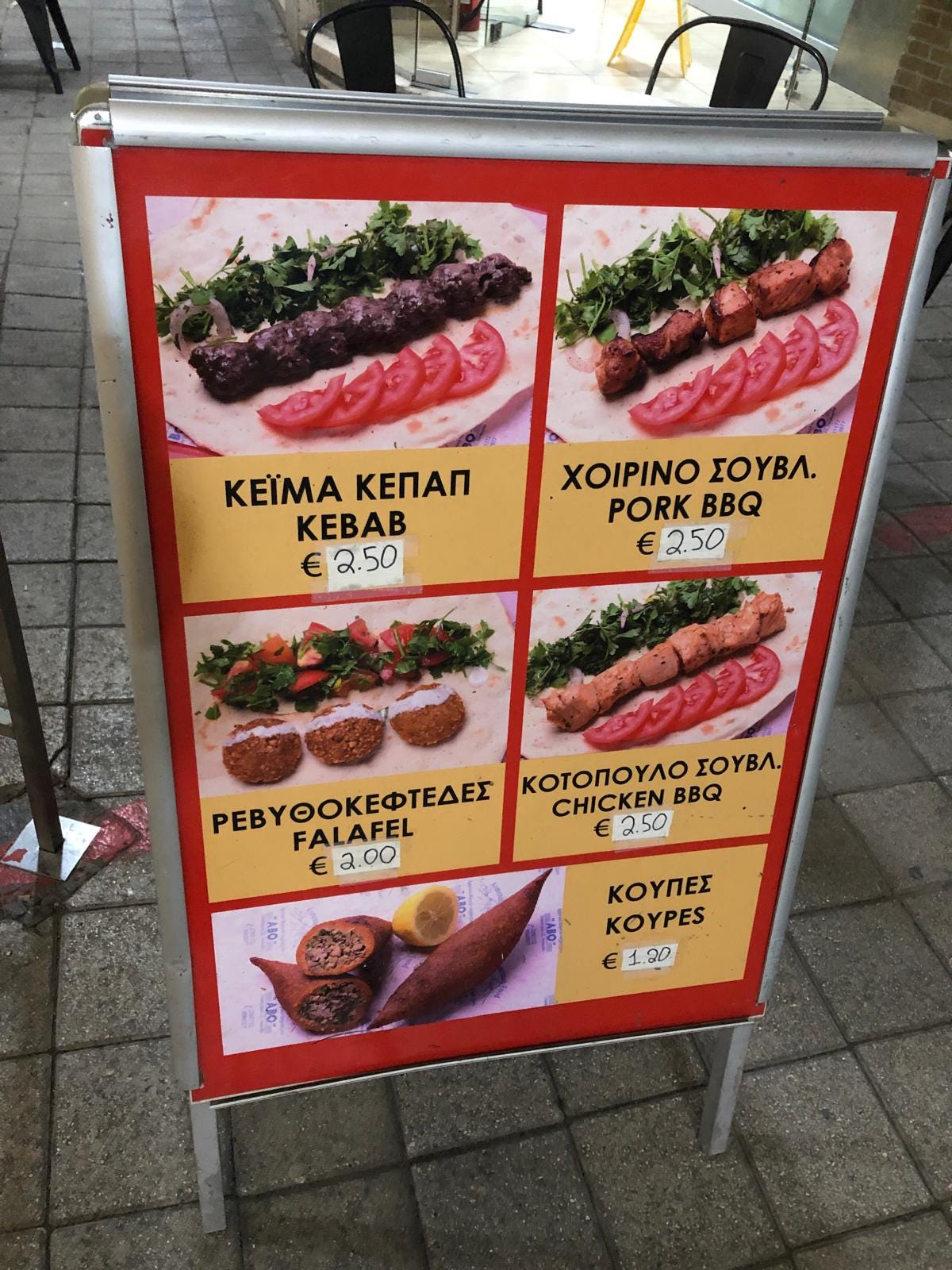
Prior to making my way down south, I spent several hours wandering the center of Lefkoşa. Its palm tree-dotted streets were lined with beautiful historic buildings, some in better shape than others. I had a kebab wrap for dinner at a restaurant flanking the border wall, which cost about $5. I should have waited to eat until I was in Nicosia as I saw a place offering a similar wrap for 2.50 euros. Northern Cyprus was noticeably expensive, its economy has been battered by inflation just like Turkey’s, and it uses the Turkish lira. Alcohol is cheaper due to the lack of taxes compared to Turkey, but that’s about it. The Northern Cyprus economy is mostly based around tourism and the private university sector, which has attracted tens of thousands of international students. The resort town Girne on the northern end of the island is popular, and the pristine hills that gaze out over the Mediterranean are dotted with wealth and investment.
The same can’t be said for Lefkoşa, which despite being the capital has been severely neglected, perhaps because most visitors go directly from the airport to Girne. The city buses look like they are fifty years old, and the old city at night is shockingly dark and deserted, mostly because so many of the streetlights are out. “People from the south come up here and look around and say ‘Am I going to get stabbed?’ and then they leave,” complained one Lefkoşa shopkeeper, who sells liquor, cigarettes and snacks in the heart of the old city. It’s a shame, because it is a beautiful historic area with lots of potential, and it seems like the necessary investments would require minimal cost to achieve significant improvement.
This is December after all, so neither Lefkoşa nor Nicosia are crowded with tourists, even though the weather couldn’t be better. On my first visit to Cyprus to 15 years prior, we swam in the Mediterranean despite it being the heart of winter. The evenings cooled down just a bit, requiring a long-sleeve shirt at most. After exploring the eerily dark old city of Lefkoşa, it was time to venture into Nicosia. Given the time of day and season, there was virtually no line at the passport controls and before I knew it I was in Greek Cyprus. The old city of Nicosia is in much better shape, and even though there are plenty of bars, restaurants and shops in Lefkoşa, on the other side there are many more, and there is no problem in terms of street illumination.
What is more striking is the investment and development that Nicosia has enjoyed, which includes an elaborately-designed post-modern main square and gleaming, high-rise residential towers, none of which are to be found on the north side. During the day in the summer, when there are more tourists on both sides, the difference between Lefkoşa and Nicosia might be less apparent, but in the off season at night, these are two distinct worlds. I walked around Nicosia for a couple hours, taken aback at how much better it was doing compared to its northern counterpart.
In 2004, an internationally-brokered referendum was held, where both Turkish and Greek Cypriots voted on reunification of the island. The vast majority of the former voted in favor, while the vast majority of the latter opted to reject the measure. That same year, Cyprus became a full EU member state. This left many Turkish Cypriots believing that they had been fooled, and the current government in the north, led by the right-wing nationalist Ersin Tatar, is fiercely anti-unification and enjoys close ties with the Turkish government. One interesting thing to note in Northern Cyprus is that despite the breakaway territory demanding recognition from abroad, you will never see its flag alone, it is always flanked by a Turkish flag. Ultimately, though the northern part of the island desperately seeks recognition of its independence, it is highly dependent and inextricably linked to Ankara. The leftist position in the north is in favor of reunification, and longtime political fixture Mustafa Akıncı, who narrowly lost the presidency to Tatar in 2020, based his political career around a unified Cyprus. This sentiment hasn’t completely dissipated in the north. Wherever I go, I manage to find the leftist bar in town, and Lefkoşa was no exception.
Cyprus has been divided for half a century, and despite years of efforts to reunite the island, this seems like an issue that will take a few more generations to solve. It’s late in the evening in Nicosia, where the weather is perfect in December. After exploring more of the newer part of the city, I head back through the old town and across the border into Lefkoşa. My hotel is about a 20-minute walk from the center, dark, quiet and empty, and it is a constant reminder of the damage inflicted by borders and frozen conflict.

